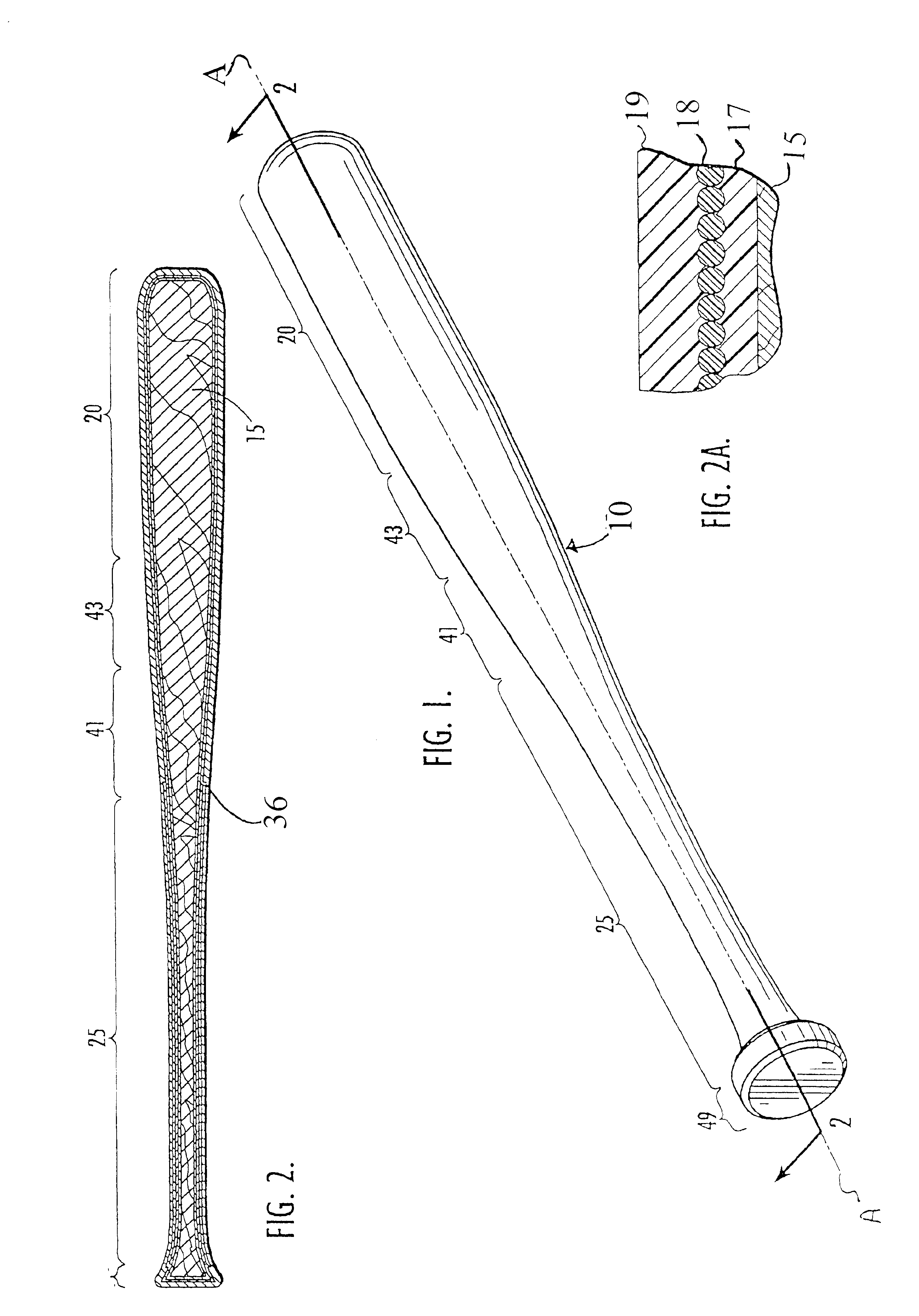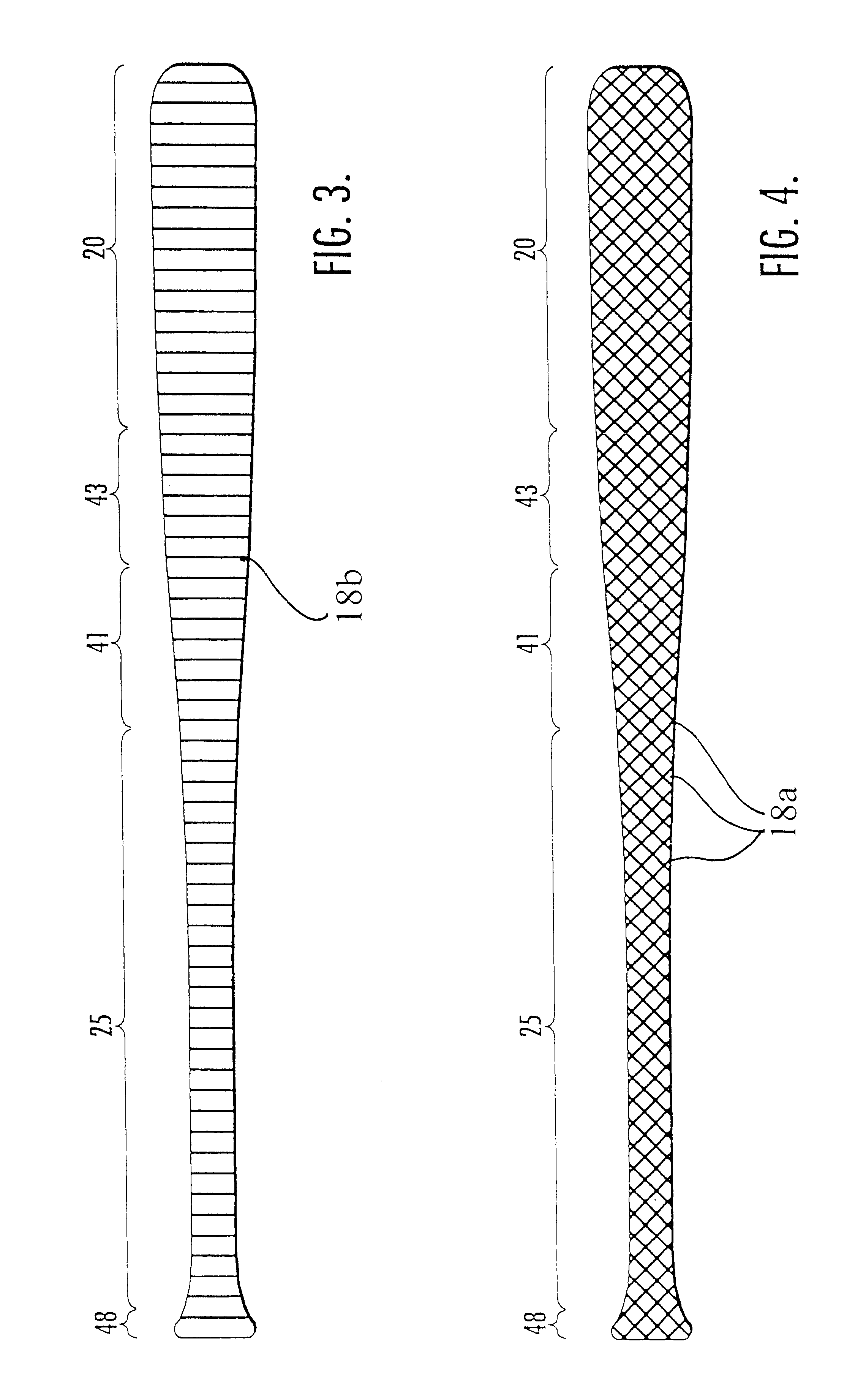Baseball bat
a technology for baseball bats and bats, applied in the field of baseball bats, can solve the problems of wood being difficult to use, wood tends to crack, warp and rot, and laminates often do not have the same physical and aesthetic characteristics as articles formed
- Summary
- Abstract
- Description
- Claims
- Application Information
AI Technical Summary
Benefits of technology
Problems solved by technology
Method used
Image
Examples
example 1
A bat was primed using the Primer Composition A, Winding Pattern B and Winding Resin A'. The resulting bat had an end weight of 31.7 ounces. The bat did resist up to 2400 hits and then the composite overwrap starts to deteriorate.
example 2
The bat was primed with the Primer Composition B, Winding Pattern B and Winding Resin A'. The resulting bat had an end weight of 32.3 ounces. The composite overwrap started to wear through at 2250 hits. Some core delaminating in between the wood circles were noticed around 300 hits. The bat was still usable until 2250 hits.
example 3
The bat was primed with the Primer Composition B, Winding Pattern B and Winding Resin B'. The resulting bat had an end weight of 31.7 ounces. The bat wore through the two layers after 1500 pitched hits and 5200 soft toss hits. Several cracks were noticed after these hits on the bat.
PUM
| Property | Measurement | Unit |
|---|---|---|
| angle | aaaaa | aaaaa |
| angle | aaaaa | aaaaa |
| angle | aaaaa | aaaaa |
Abstract
Description
Claims
Application Information
 Login to View More
Login to View More - R&D
- Intellectual Property
- Life Sciences
- Materials
- Tech Scout
- Unparalleled Data Quality
- Higher Quality Content
- 60% Fewer Hallucinations
Browse by: Latest US Patents, China's latest patents, Technical Efficacy Thesaurus, Application Domain, Technology Topic, Popular Technical Reports.
© 2025 PatSnap. All rights reserved.Legal|Privacy policy|Modern Slavery Act Transparency Statement|Sitemap|About US| Contact US: help@patsnap.com



